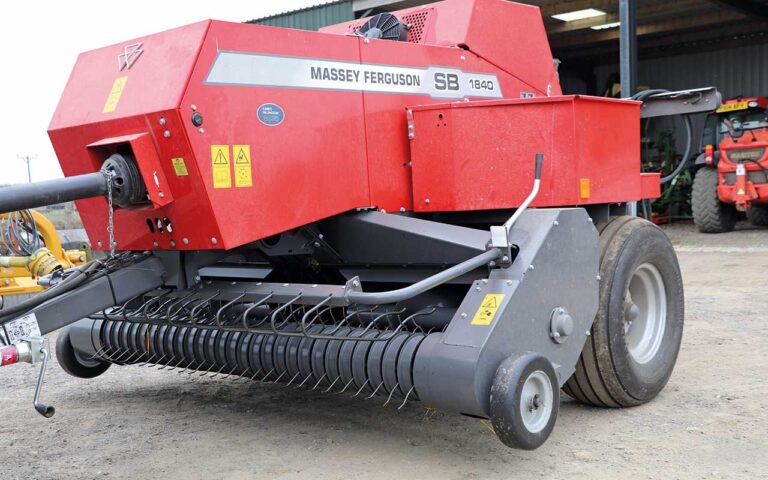Philip Orton took delivery of the new MF SB 1840 before the 2024 season, purchased through dealer Carrs Billington and salesman Marc Thorn.
It isn’t the first MF small square baler operated by Phillip. He previously used an MF 4, one of the early models that helped build the business, along with several New Holland machines.
As one of the only small square baling contractors in the area, he has always had a strong demand for his services.
“Once people knew I had a small baler, the work kept coming, and the business grew quickly in the early 2000s,” he says.
“The art to small square baling is patience to produce the right bale. I’ve also learned that having the right equipment helps, and this latest MF baler is one of the best I’ve owned for bale consistency and output, with 3,000 bales/day easily achievable.”
Philip is based at High Close, between Barnard Castle and Darlington in North Yorkshire, and alongside the small square baling contracting, he has a busy fabrication business at local feed mills and constructing stables.
He has scaled back the baling contracting in recent years to about 16,000 bales/season from its height of 36,000 bales/year.
Time to change
There were several reasons why he decided to invest in a new baler, with improving product quality and consistency high on the list.
The baler has hydraulic density that can be adjusted to suit the crop, which means it’s easier to produce uniform bales.
“This is one of the biggest improvements over the old baler. The bales are now like Jenga blocks, with consistent density and identical size making them easy to stack. Before we would regularly struggle as the inconsistent shapes, or banana bales, made transporting, wrapping and stacking them neatly impossible.”
The 1.9m-wide pick-up has closely spaced tines to minimise damage to the crop and reduce contamination. The baler has a short stroke design, but retains a high-speed plunger, which reduces wear and the nodding effect felt by the operator while maintaining a higher bale output.
Further to this, the OptiForm bale chamber regulates the pressure of the rails in the chamber as conditions change during the day.
Philip wraps a lot of small bale haylage for the domestic and horse markets and notes that the consistent length of the bales has made this job much easier, with reduced downtime.
In-line feed efficiency
The change to an in-line feed design has offered efficiency gains for baling output and switching regularly between fields.
The narrow 2.6m transport width means it’s easy to negotiate the tight lanes around North Yorkshire, but the real benefit is felt when setting up the baler from road to work.
Philip explains: “With side-delivery balers, I would always need to get out of the cab to change a pin position to switch between field and road mode.
“Negotiating gateways with an angled drawbar was also a challenge. With the MF, I flick the PTO on and lower the pick-up reel once in the field. It probably saves about 15mins every time I move fields, which soon adds up when I’m in lots of small paddocks.”
The straight drawbar means the baler follows like a trailer, so it is easier to swing into fields from the lanes.
Along with the purchase of the baler, Philip bought a belt sledge to run behind the MF SB 1840. He says the combination is the best he has used for the work and the clean bales created by the baler aren’t damaged or contaminated by the sledge dragging them across the ground.
Simple additions such as the automatic reversing electric fan on the knotters, which sends a blast of air at regular intervals from front to back, preventing debris build-up, save a lot of downtime. He says this is worth every penny, with no knotter downtime and the central greasing also reducing daily maintenance.
“I notice a cloud of dust from the top of the baler when the fan engages. This saves so much time as it keeps this area immaculate and the knotters working without an issue.”
Easy access to the main working parts to sort any blockages or issues cuts downtime and the large lockers on each side of the baler allow 10 rows of string to be carried at once, reducing the need to carry reels in the cab or head back to the yard during the day.
Philip concludes: “As a contractor I need to produce bales that are consistent and easy to handle, while being of the highest quality for the equine market. There is still a strong demand for well-produced small bales and the new MF SB has increased my output and product quality, while making operation easier.”


